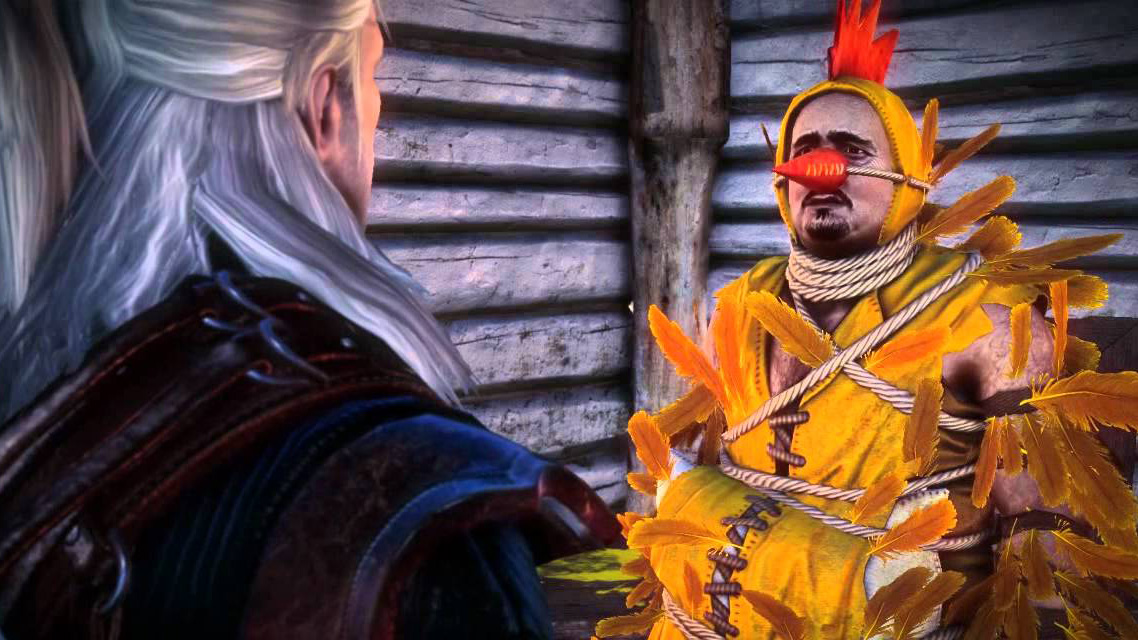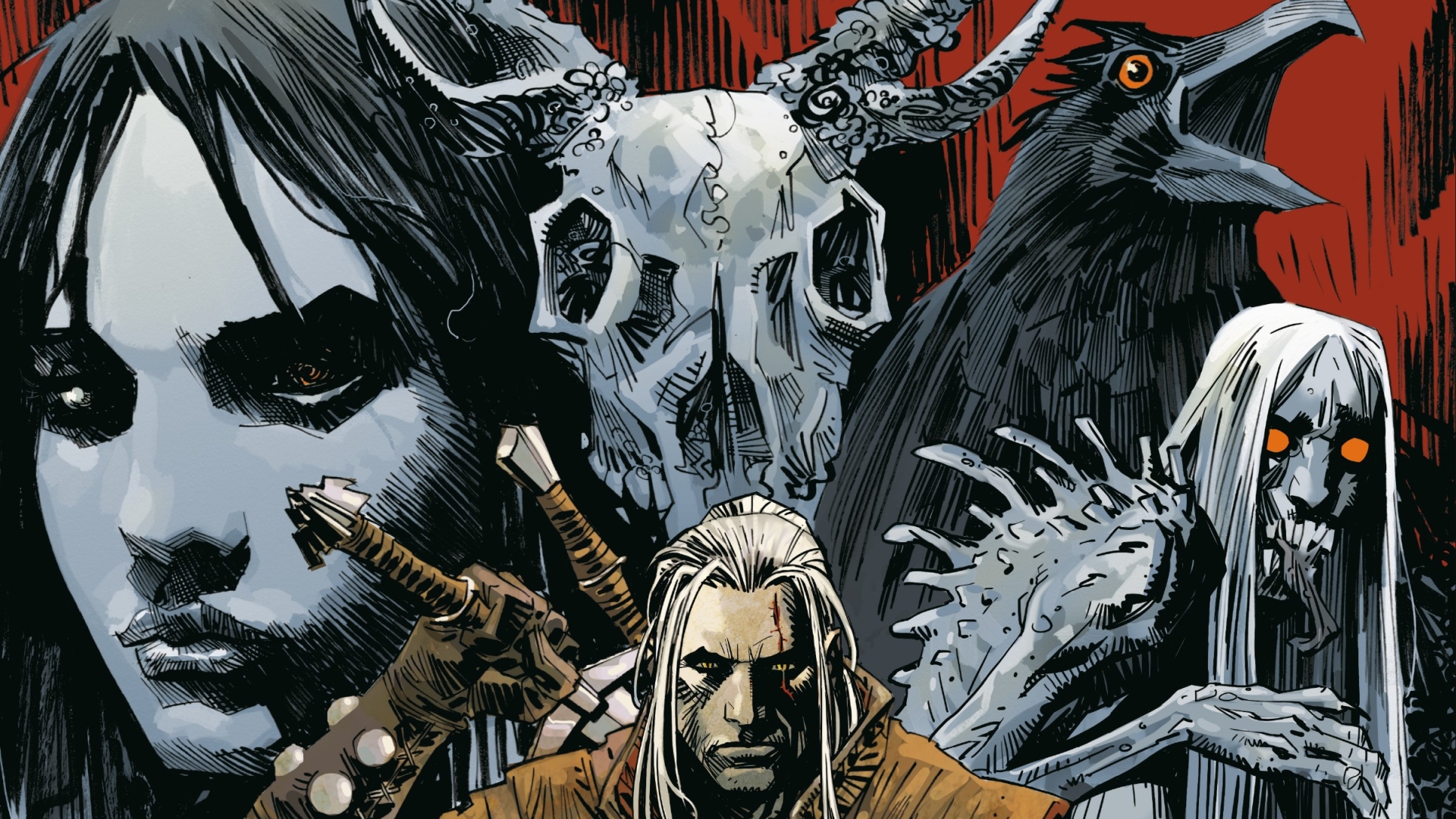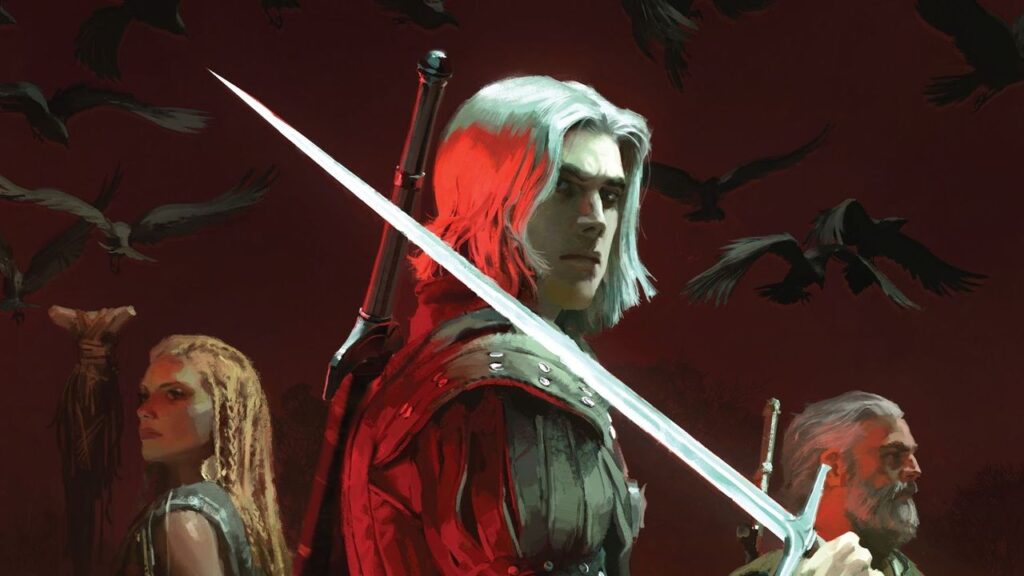No good deed goes unpunished in the cynical world of The Witcher. Crossroads of Ravens opens with our young hero, Geralt not-yet-of-Rivia, about to be punished for the crime of rescuing a peasant father and daughter. Multiple authorities take him to task for daring to play hero, all for entirely self-serving reasons, until an older witcher named Preston Holt steps in to save Geralt and position himself as the boy’s new mentor.
Crossroads of Ravens begins as it means to go on. Chapter two opens with a description of a peasant standing in fresh cowshit to keep his feet warm. It’s a book about the mud and muck of its medieval world, one that jams its characters into moral quagmires as well as physical ones.
It’s a prequel to the Witcher series, set shortly after Geralt finishes his training at the witcher stronghold of Kaer Morhen under Vesemir and is let loose into the world. He’s like a fresh-faced graduate right out of the education system suddenly having to deal with an adult world he isn’t prepared for. Will he have to move into a moldy sharehouse and get a part-time job?
Well, no. But he is going to meet a semi-retired senior witcher and be offered a mixture of post-graduate training and help with lining up new work. It’s up to Geralt to decide how seriously to take the teachings of Preston, a witcher who is strangely independent of Kaer Morhen and has his own ideas about monster-hunting.
As well as leaping back to an earlier point in Geralt’s life, Crossroads of Ravens harks back to Sapkowski’s earlier storytelling style. While it’s still a novel with a single throughline, Geralt’s gig-economy monster-hunts lend themselves to an episodic structure that feels closer to the early Witcher short stories than most of the novels that followed them. (Though the interquel Season of Storms did have a bit of this vibe, it also felt more like a jokey sidequest, where Crossroads of Ravens plays it straight.)

Being a prequel, it’s obliged to explain how various familiar things came to be. There’s nothing as obnoxious as the “why he’s called Han Solo” bit from Solo, though there is a “why he wears a headband” bit to remind us that Book Geralt does indeed wear a headband, and if you ever wondered about the identity of the anonymous author of that Monstrum book about how terrible witchers are that gets quoted at the start of various chapters in the saga, well, there’s an answer for you here. Geralt’s potions get names too, though different names to the ones the videogames gave them, which feels like another moment of Sapkowski stamping his own stake on the canon.
Since it’s set before Geralt meets Yennefer and Dandelion and various other familiar cast members—though Nenneke features fairly heavily—Geralt is alone for extended sections of Crossroads of Ravens, and even when he’s not, he’s less garrulous than Old Man Geralt became. The extended philosophizing that’s a fun part of the other books is absent here, and missed, as are the viewpoints of other people. There’s a little of that, especially in the letters between characters that introduce some chapters, but don’t expect the point-of-view leapfrogging that became a hallmark of the books from The Blood of Elves onwards.
There’s also nothing as awkward as the scene in The Blood of Elves where members of Dandelion’s audience argue with each other to present in-character exposition for pages and pages, so thank goodness for that. But I did miss chatty Geralt.
Toward the end Crossroads of Ravens pulls up its big-boy pants and decides to build to a resolution, abandoning the episodic monster hunts in favor of something more. That something more is a revenge story, which isn’t a trope I love. Meeting a bunch of bad people then seeing them get their comeuppance is a difficult thing to sustain interest in as the only motivation for a character, though I’m not telling you anything you don’t already know unless you’re one of the people who liked Kill Bill Vol. 2 as much as Kill Bill Vol. 1.

Sapkowski does find a way to make Crossroads of Ravens more than just another “watch these shitheads get what they deserve” story, twisting it back into the grappling-with-destiny that’s core to the series. It ends up feeling like a deliberate contrast to Season of Storms. Where Sapkowski’s previous return to the series we all thought he was done with was more of a romp, a shaggy-dog ramble with old fave Dandelion along for the ride, Crossroads of Ravens doubles down on the series’ pessimistic view of human nature, which it then uses as deliberate contrast to the heroes’ actions. Geralt, rough around the edges as he is, gets to be the outsider who highlights a society’s corruption by standing outside it.
Freshly hewn direct from the rock in his youth he’s rougher than ever, and it’s satisfying to see him struggle toward the code he lives by later on. While it’s not my favorite Witcher book, and I definitely wouldn’t recommend it as a starting place—you’d lose the delicious dramatic irony of reading Crossroads of Ravens while knowing what’s to come—it’s not a bad one either, and if Sapkowski keeps returning to the world of The Witcher then so will I.




Great review! It sounds like “Crossroads of Ravens” captures the intriguing and often harsh realities of The Witcher universe. It’s always fascinating to see how characters navigate such a complex world.
Thank you! It really does delve into the complexities of morality in The Witcher universe. The characters’ choices often lead to unexpected consequences, highlighting the theme that even the best intentions can have dark outcomes. It makes for a compelling read!
You’re welcome! It’s fascinating how the characters often face tough choices that highlight the gray areas of morality. The way their decisions impact not just themselves but the world around them adds a rich layer to the storytelling.
Absolutely, the moral complexities really add depth to the story. It’s interesting how those tough choices often reflect real-life dilemmas, making the characters relatable despite the fantasy setting.
I completely agree! The moral dilemmas faced by the characters definitely enrich the narrative. It’s fascinating how these choices often reflect broader themes of power and consequence in the Witcher universe.
Absolutely! The way these dilemmas force characters to confront their own values really adds depth to the story. It also highlights the often harsh realities of choices in a world where consequences are unpredictable.
I completely agree! It’s fascinating how the moral complexities in “Crossroads of Ravens” not only shape the characters but also reflect the harsh realities of their world. This adds a level of realism that keeps readers engaged and questioning their own beliefs.
Absolutely! The way the characters navigate their choices really highlights the unpredictable nature of morality in The Witcher universe. It makes you question what the right decision is in such a harsh world.
I completely agree! The characters’ decisions really do reflect the moral complexities of their world. It’s interesting how their actions often lead to unexpected consequences, making every choice feel weighty. This adds a layer of depth to the storytelling that keeps readers engaged throughout.